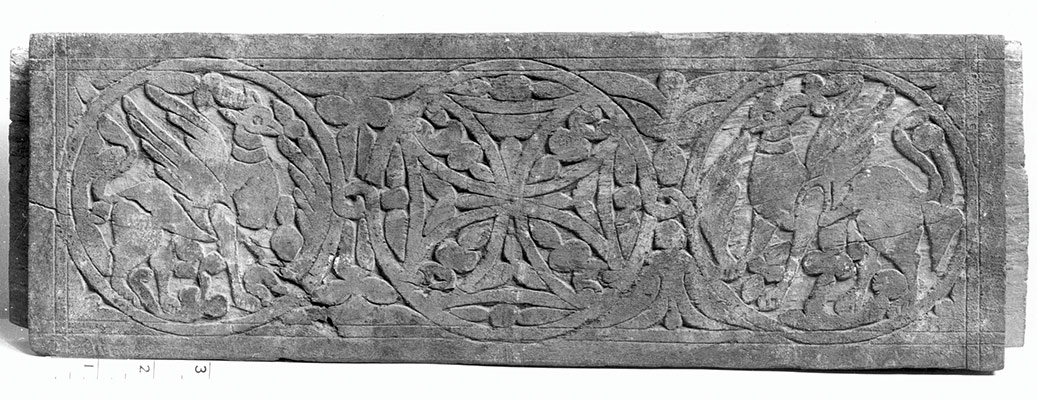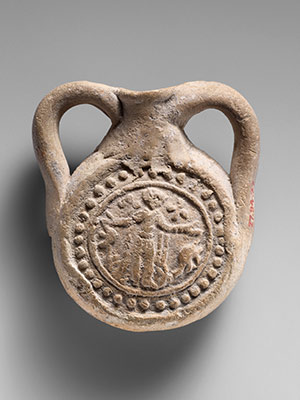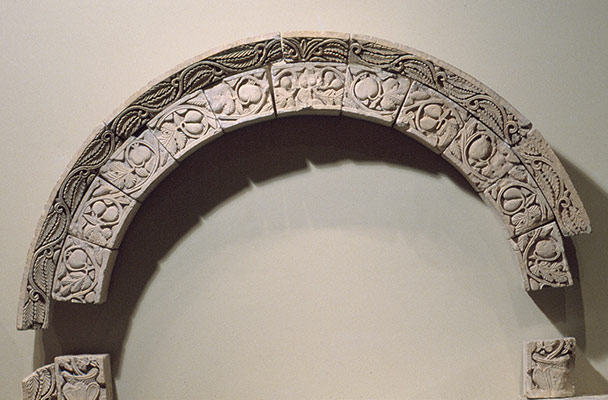From 500 to 1000, Egypt witnesses the struggle between
,
, and Arab armies, whose consecutive periods of short-lived rule continue even after the
. By the end of this period, however, Egypt develops from a significant province of the Byzantine empire into an autonomous power, with its capital, Cairo, transformed into one of the most important centers of the medieval world.Key Events
- early 500sThe fourth-century site dedicated to the Egyptian saint Menas (now Abu Mina, southwest of Alexandria) becomes a highly important Christian pilgrimage destination. His cult quickly spreads throughout the.
- ca. 527The Byzantine emperor(r. 527–65) outlaws pagan religious practices in Egypt, marked by the closing of the temple at Philae (535) and the dispatch of Byzantine missionaries to southern territories. Justinian I also reorganizes Egypt’s system of imperial administration, uniting civil and military authority over the region.
- 538As a result of persecution by the Orthodox Byzantine state, Monophysite Christians officially establish the Coptic Church, which remains active today. An independent patriarch is set up as the head of the new faith, his seat in Alexandria.
- 548–565The renowned Monastery of the Burning Bush at Mount Sinai (founded by the fourth century) is fortified by Emperor Justinian I to defend thefrom Arab raids. This community of Byzantine Orthodox monks, under the authority of the patriarch of Jerusalem, remains autonomous from the Coptic Church of Egypt.
- 577The Roman, dedicated to the pagan gods Isis, Harpocrates (Horus,) and Osiris (built ca. 15 B.C. by Augustus), is converted for use as a Christian church. The event is recorded in a Coptic inscription adorning the temple.
- 616–628The Persian-Sasanian king Khosrow II (r. 616–28) seizes control of Egypt from the Byzantine emperor Heraclius (r. 610–41).in Egypt is short-lived, and the Byzantine state recaptures the territory in 629 along with Syria and Palestine.
- 639–642Arab armies under the banner ofconquer Egypt during the reign of the Rightly Guided Caliph ‘Umar ibn al-Khattab (r. 634–44). Al-Fustat, the garrison town that will eventually become part of the future city of Cairo, is established and a congregational mosque, the first in Egypt, is built for use by the Muslim army.
- 641–868Governors are appointed to Egypt by caliphs at the helm of Islamic power in Medina, Damascus, and later, Baghdad.
- ca. 750The sixth-century pilgrimage complex of Saint Menas is restored, attesting to the continued veneration of the saint under Arab rule.
- 868–905Established by a former deputy governor, Ahmad ibn Tulun (r. 868–83), the Tulunid dynasty breaks away from thein Baghdad and becomes the first independent Islamic dynasty to rule Egypt. Along with a palace, Ibn Tulun commissions a monumental congregational mosque (876–79) that is influenced by ‘Abbasid examples in Iraq.
- 900–1100The Monastery of the Burning Bush at Mount Sinai receives theof , a Christian princess said to have been beheaded in 305 by the emperor Maxentius; the monastery is renamed in her honor.
- 969–973The Fatimid army conquers Egypt and founds the city of Cairo (al-Qahira, “the triumphant”), which is established as the new capital. The congregational mosque of al-Azhar (“the splendid”) is also founded at this time and, together with its adjacent institution of higher learning, becomes the spiritual center for Isma’ili Shi’i.
- 969–1171An area including Algeria, Tunisia, Sicily, Egypt, and Syria is ruled by the(909–1171). During this period, Egypt enjoys enormous prosperity, primarily due to its intermediary role in the lucrative trade between the Mediterranean and India. Besides rivaling ‘Abbasid Baghdad, the opulence of the Fatimid court fuels a renaissance in the arts, transforming Cairo into the most important cultural center in the Islamic world.
- 996–1013The reign of Fatimid caliph al-Hakim, who rededicates the mosque begun by his father, al-‘Aziz (r. 975–96). The Mosque of al-Hakim, an important example of Fatimid architecture and architectural decoration, plays a critical role in Fatimid ceremonial and procession, which emphasize the religious and political role of the Isma’ili Shi’i caliph.
Citation
“Egypt, 500–1000 A.D.” In Heilbrunn Timeline of Art History. New York: The Metropolitan Museum of Art, 2000–.



No comments:
Post a Comment